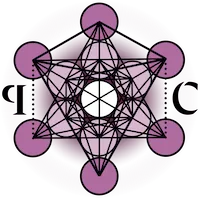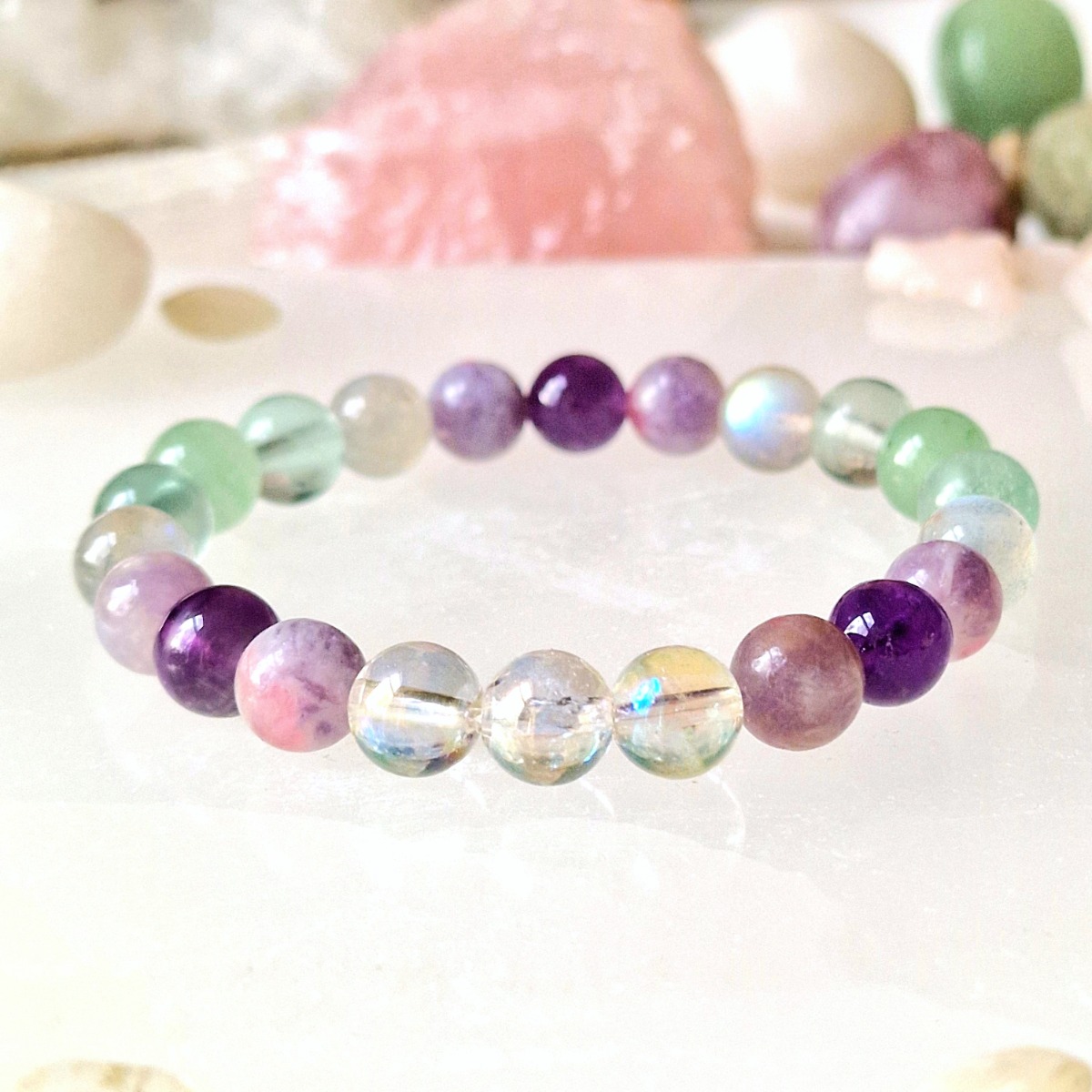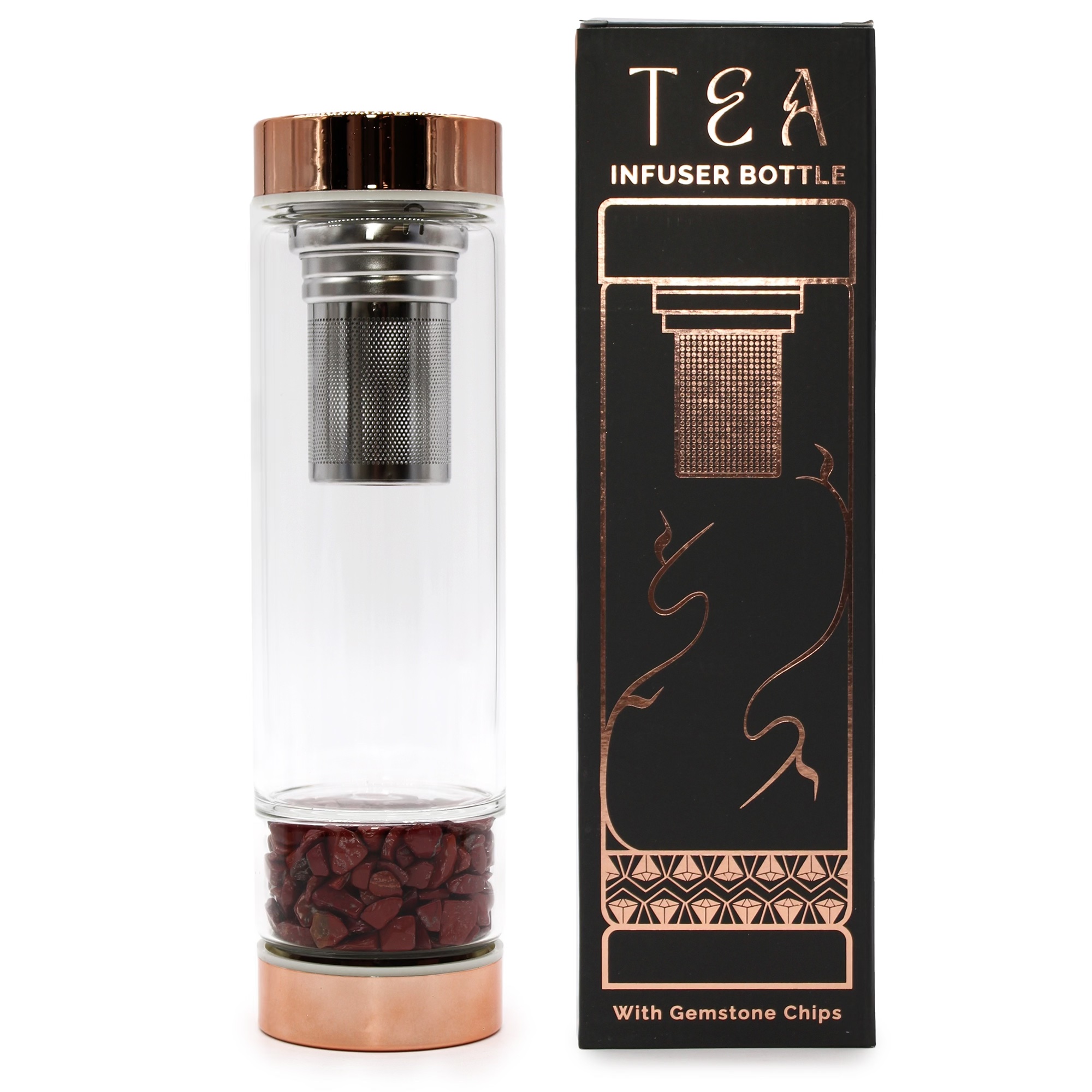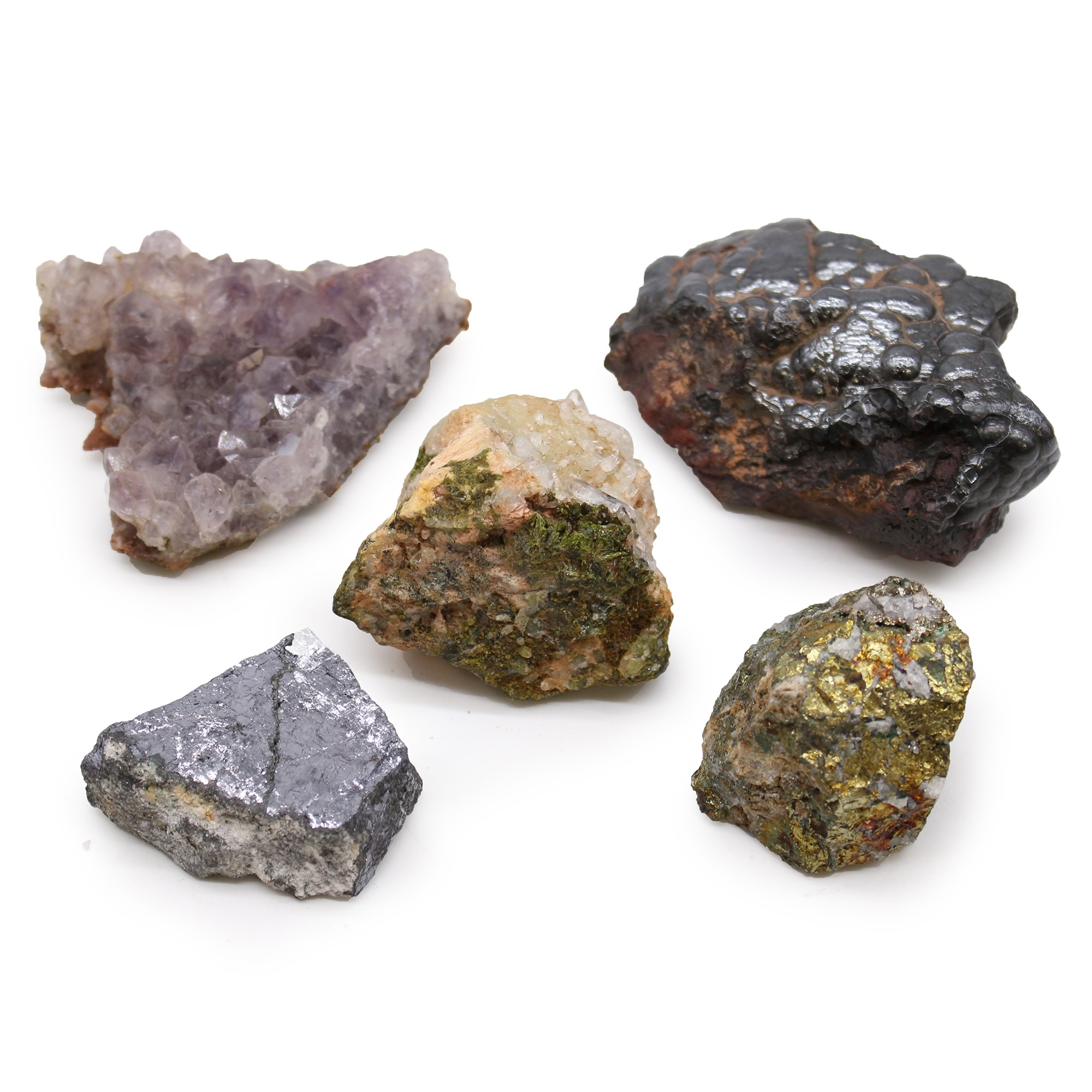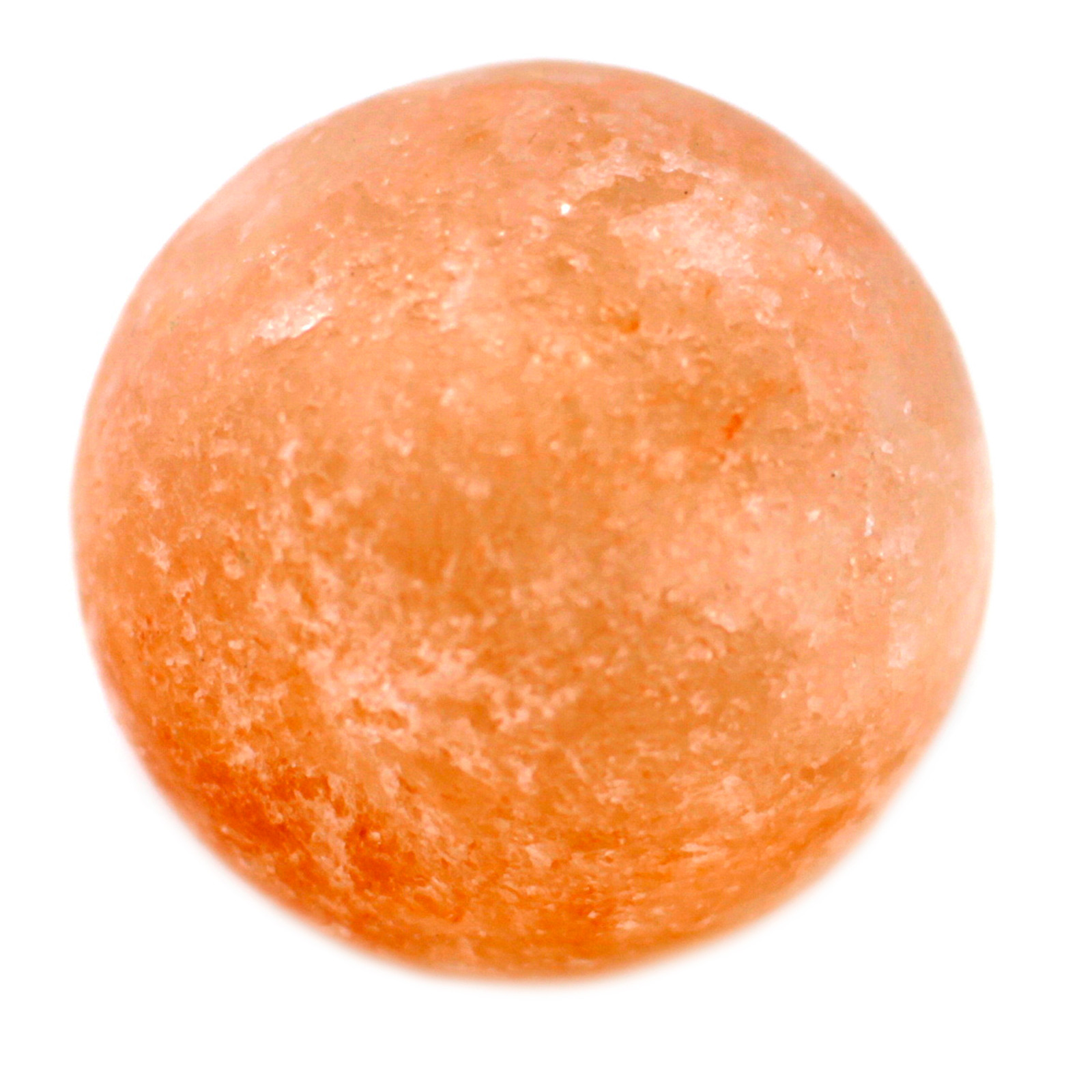How do crystals form?
Crystals form through the interaction of temperature and pressure with various elements, allowing them to grow in diverse environments. Commonly, crystals are found beneath hot water springs or near volcanoes, where the cooling of water or lava over time facilitates crystal formation. Additionally, crystals can arise from the evaporation of seawater on the Earth's surface or through the transformative effects of heat and pressure on existing rocks, giving rise to a rich array of crystal formations across the globe.
What are crystals?
The term "crystal" refers to a mineral that has formed into a crystalline structure. Crystals can be categorised based on their structure into various systems, including Cubic, Monoclinic, Triclinic, Trigonal, Hexagonal, Orthorhombic, and Tetragonal systems. Essentially, a crystal is any pure substance that is arranged molecularly in a geometric pattern. This molecular arrangement is what gives crystals their unique properties and visual appeal. Due to their formation processes, crystals can manifest in a wide variety of forms, ranging from precious and semi-precious gemstones to common substances like salt. Therefore, products made from healing rock salt, such as salt lamps, salt deodorant stones, and even rock salt crockeries, have become increasingly popular. Whether it's the dazzling beauty of gemstones or the everyday practicality of salt, crystals play an essential role in both the natural world and human society.
Today, crystals are increasingly recognised and utilised for their metaphysical healing properties, serving as powerful tools to clear negative energy and restore balance within the body, mind, and spirit. The popularity of crystal healing has surged, extending beyond just groups interested in holistic health or metaphysics. Celebrities have significantly amplified this trend, inspiring many to embark on their own crystal healing journey. Notable figures such as Adele, who uses crystals to combat stage fright, and the Beckhams, who adorn their home with crystals in various forms, have openly shared their affinity for crystals. Other celebrity crystal enthusiasts include Kate Hudson, Gwyneth Paltrow, Uma Thurman, Kim Kardashian, Patrick Swayze, and many more, proudly incorporating crystals into their daily lives, whether in the form of crystal-infused beauty products, shaped palm stones, or jewellery, harnessing the transformative energies of these ancient gems. Their influence has helped propel the mainstream adoption of crystal healing practices worldwide.
What is crystal healing?
Crystal healing is based on crystals' remarkable ability to absorb, amplify, and transmit energy, making them powerful tools for interacting with our body's energy centres and fields, also known as vibrational energy. Each crystal harbours its own distinct metaphysical properties, characterised by specific vibrational numbers and resonant frequencies. These qualities enable crystals to effectively redirect and re-channel energy flow, clearing areas within the body or energy field that have become stagnant or blocked. By attuning to the energetic resonance of crystals, individuals can unlock their innate potential for transformation and well-being. This profound connection between crystals and vibrational energy forms the basis of many holistic healing practices and spiritual traditions.
For detailed insights into the unique metaphysical properties of each crystal, visit our crystal directory.
What’s the science behind crystal healing?
As per the fundamental principles of physics, everything in the universe is comprised of energy. Even the photons within atoms are vortices of energy, constantly vibrating and spinning. This foundational understanding leads scientists to recognise that everything we perceive as solid matter is invisible, pure energy in constant motion - including the particles that make up humans and crystals. When we come into contact with a crystal, we generate and accumulate electrical energies that the crystal absorbs from pressure, changing temperature, and movement, and converts into electronic frequency. The scientific term for this electric charge is piezoelectricity.
Quartz crystal’s piezoelectric effect is also used in technology like microphones, watches, printers, and medical implants. Man-made devices to treat physical pain, mental illness, and other disorders also work with electrical currents, such as EMS (electronic muscle stimulation), RFA (radiofrequency ablation), or TMS (transcranial magnetic stimulation). According to the most widely accepted crystal healing theory, the healing efficacy lies in the combination of the energetic properties of high vibrational crystals and the placebo effect, which studies confirm to have a real impact on the body and mind.
What are high-vibrational crystals?
High-vibrational minerals have a higher concentration of physical, optical, and metaphysical properties. Clear quartz, Rose quartz, Amethyst, Citrine, Aventurine, Agate, Celestite, Tourmaline, Selenite, and many more, belong to this group. They are used in channelling, healing, activating manifestation grids, improving clairvoyance, clearing spaces, absorbing and amplifying energies, charging other crystals, and opening the doors to universal consciousness. It’s not accidental that these crystals are used during energy healing, Yoga, and meditational practices. See more on chakra healing, charging crystals, and high-vibrational crystals in our crystal directory.
When it comes to purchasing crystals, distinguishing between genuine specimens and imitations is essential. While many popular crystals like quartz are readily available and abundant in nature, and a lot of the time, it would be more costly to create fake ones than to use original minerals, unfortunately, there are still imitations circulating the market. Here's a guide to help you determine if a crystal is real:
How can I tell if the crystal is fake or real?
Temperature
Natural crystals don’t retain heat for very long, and when you pick them up, they feel cold to touch, while fake ones are lukewarm. Authentic crystals are also good conductors of heat, so they heat up quickly. If you place a piece of ice on the crystal for a minute, when removed, the crystal should warm up instantly. If it takes a while, then it's most likely fake.
Weight
Genuine crystals are a lot heavier than synthetic ones. Natural crystals contain inclusions and metals from their formation that weigh them down. Fakes, on the other hand, are mostly made with glass or plastic and therefore are lightweight. Bear in mind that crystals have their own associated characteristics, including chemical composition, crystal structure, and specific gravity/relative density, which contribute to significant variations in weight; e.g. hematite is almost twice as heavy as quartz crystal. For more on crystals' specific properties, visit our crystal directory.
Imperfections
Real crystals contain natural colour variations, imperfections, inclusions, fractures, or hydrothermal veins. Only a very few genuine crystals have perfect clarity, and they are expensive. If the crystal is low-priced and appears perfect, then it's glass. Suppose there are air bubbles inside, a perfectly smooth surface without cracks, or super sharp clear angles (genuine crystals are usually not cut as perfectly as glass), in that case, you are probably looking at a synthetic crystal.
Distortion
Due to the light bending through the crystal, if you hold it in front of the text, the genuine crystal will distort the letters, while glass will only magnify them.
Colour
The natural colouration of crystals tends to be slightly muted and translucent, exhibiting a unique beauty all its own. When encountering crystals with excessively saturated colours and no translucent gradient, it often indicates that they have been dyed. This artificial enhancement can result in a vibrant appearance that is not typically found in natural specimens.
Another telltale sign of dyed crystals is the presence of darker-colored cracks or fissures which is due to the dye pigments accumulating in the cracks. It's worth noting that some crystals or stones are intentionally dyed to enhance their colour without compromising their inherent healing properties. For example, Howlite is naturally white, so blue Howlite is often dyed to achieve its vibrant hue. If it is sold as Turquoise, that would considered to be fake. However, despite being dyed, as Howlite, it retains its beneficial energies and metaphysical qualities, making it suitable for use in various healing practices.
Scratch resistance
Many common crystals have high hardness ratings on the Mohs scale, making them resistant to scratches from everyday materials. The Mohs scale is a qualitative mineral hardness measure ranging from 1 (softest) to 10 (hardest). Crystals with hardness ratings above 6.5 are considered very hard and can only be scratched by materials with a higher hardness rating. Quartz, for example, has a hardness rating of 7 on the Mohs scale. This makes quartz highly durable and resistant to scratching by common materials like steel.
Bear in mind that there are high-vibrational healing crystals that are softer than quartz. For example, Moonstone, with a rating of 6, can still be scratched by sharp steel; Calcite, with a hardness of 3, can be scratched by a copper coin, and Selenite, with a hardness rating of 2 can even be scratched by fingernails. See more details on crystals’ mineral properties in our crystal directory.
Besides the above-listed points, natural crystals have an energy you can sense. Trust your intuition!
Misconceptions
There are, however, some misconceptions related to heat-treated crystals, Aura coating and the Goldstone.
Heat treated crystals
Heat-treated crystals are not considered fake. Naturally occurring heat is part of crystal formation in the Earth; heat changes the mineral composition and, therefore, the colour of common healing crystals. In fact, it is slow heating that turns Amethyst into Citrine. Natural heating and laboratory heating produce identical results. Therefore, heat treatment will not change the energetic vibrations of crystals and will continue to be used for healing with great success.
Aura coating
Another misconception would be the Aura (also called Angel Aura, Rainbow Aura) coating often seen on quartz crystal, giving it a shiny, rainbow-effect look. This is a fine metal coating using either gold, silver, platinum, titanium, niobium, indium or cobalt, depending on the desired colour to be achieved, and its vapour is deposited on the crystal at a high temperature with a vacuum chamber by electrostatic charge. As these metal elements are also found naturally on Earth, this doesn’t take away the quartz crystal’s healing properties underneath the coating; these natural metal elements are meant to enhance them. So just because a crystal looks gorgeous and has an aura shine, it doesn’t mean it’s fake!
Goldstone
The third misconception relates to Goldstone (other names include Aventurine Glass or Monk’s Stone). Goldstone is not a stone; it is a man-made glittering coloured glass. So, it cannot be fake; it is man-made to begin with. It is, however, often mistaken or misrepresented as a natural material. Goldstone is made by melting copper oxide, silica and other metal oxides in a low oxygen-reducing atmosphere. This process allows metallic crystals to precipitate from the solution without melting or oxidising – essentially crystallising. Once cooled to a single solid mass, shaping can begin. So, what gives Goldstone that beloved glitter is essentially the copper and tiny pieces of glass. Copper substituted for cobalt or manganese gives other colour variants such as blue goldstone or purple goldstone. Even though Goldstone is man-made, it doesn’t take away its charm and symbol of ambition, inspiration and the power of creativity and self-belief.
